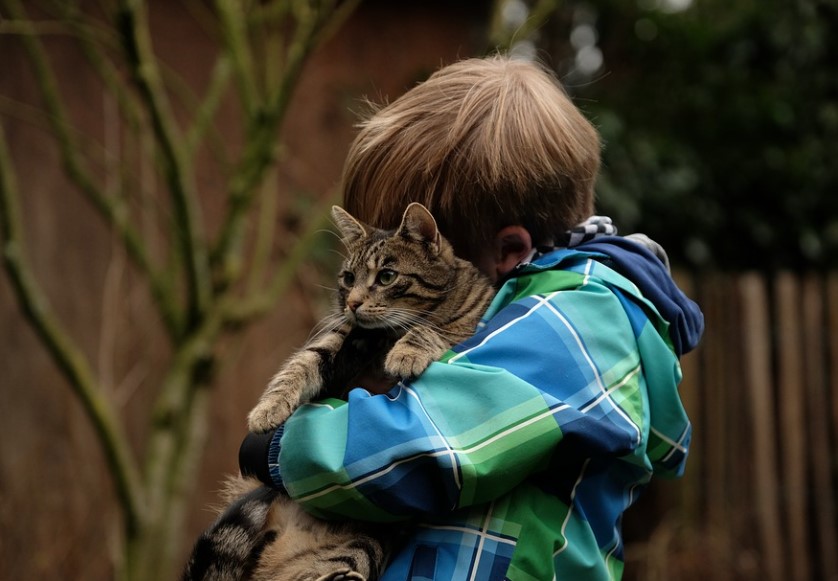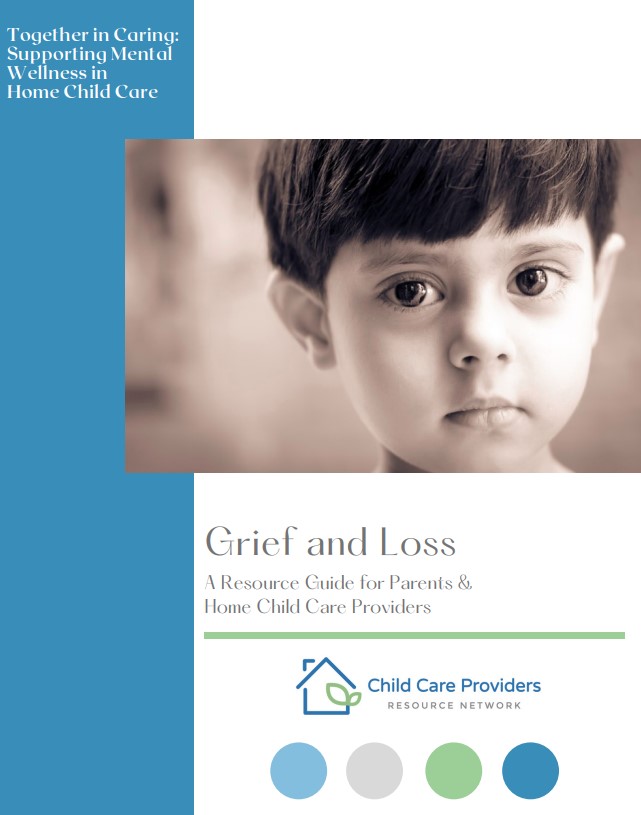When a Pet Dies–Supporting Children in Their Grief
Adapted from "Grief and Loss: A Resource Guide for Parents and Home Child Care Providers"
Often, one of the first and most common grief experiences for young children is the death of a pet–whether a beloved family pet or a special pet at a caregiver’s home.
Just as with the death of a person, and depending on their age and development, every child will react differently to the death of a pet. Be patient and reassuring as you talk to children in a way that is age-appropriate and sensitive.

You can support children by:
- Keeping to the facts (use your discretion regarding the details) and using words that are direct and honest but not scary. Use simple language and truthful explanations: “He died.”, “She was very sick/old and her body stopped working.”, “They’re dead. They can’t eat or breath or walk anymore.”, “She died. Died means she’s not coming back. We won’t see her again.”, “We can still think about him and remember the special times we had together.”. Avoid euphemisms such as “put to sleep”, “gone to a better place”, “lost” or “crossed the bridge”. These terms can be confusing and lead to misunderstanding.
- Answering their questions as best you can–if you don’t know an answer, just say so.
- Encouraging them to share their feelings, whether sad, mad, scared, etc.
- Sharing your sadness and/or your own personal pet loss story.
- Modeling and building empathy. Express your own feelings : “I’m sad too. I’ll miss feeding Finn and watching him swim around” and give children the opportunity to express theirs. Help them to build empathy when a friend is grieving: “She’s sad. Her dog died and she misses him. What can we do or say to tell her that we care?”.
- “I wish…, I miss…, and I remember…” are good starting off prompts. Some children will join in and want to share while others might prefer to listen as you share your thoughts and feelings.
- Wondering together. Some questions have no answers. It’s ok to say that you don’t know the answer but that you’re glad that you can wonder about it together.
- Offering comfort–be close and be present. Respond with care and kindness and reassure children that they are safe, cared for, and loved.
- Reading together–picture books can help children to process their feelings.
- Encouraging children to play. This is how they work out difficult situations and make meaning of events they don’t quite understand.
- Celebrating the pet’s life with a special gesture—Invite the children to take a favourite walk, draw a portrait of the pet, plant a flower or tree, paint a memorial rock, blow a wish, sing a song, etc.

Children are naturally curious about life and death. Turn everyday moments into an opportunity to talk about the life cycle. Observing plants and insects often provides a natural segue to talking about death. Understanding the inevitability and irreversibility of death takes time. As children grow and develop, they begin to process and accept these concepts. Introducing the language and simple facts can help to prepare children for the death of a pet down the road.
Know that each child will process their grief in their own way and in their own time. Being present, giving children the time and space to work through their emotions, wondering together about the hard questions, and bearing witness to their pain will all help to validate their grief.
Interested in learning more? Check out our e-book Grief and Loss: A Resource Guide for Parents & Home Child Care Providers. Topics include:
- How do children grieve? Common reactions and ways to offer support
- A note about separation and divorce
- Talking about death
- Ways to honour and celebrate life
- Book suggestions and reading lists
- Recommended resources
You can download a free copy of the guide on the Resources section of our website.

